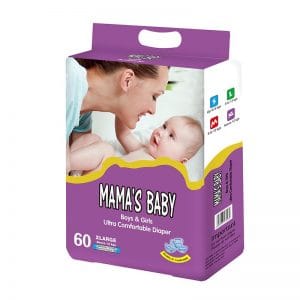What influences the American baby and female hygiene market?
At the FOCUS International Forum of CIDPEX2019 Wuhan Tissue Paper Annual Meeting, Ms. Jane Wishneff, Executive Director of the North American Baby and Adult Hygiene Products Center (BAHP), presented the changes in American consumer demand, environmental impact and other factors for infants and women. What are the key impacts of policy trends, product manufacturers and marketing methods in the supply industry?
1. What is the organization of BAHP?
BAHP is the North American Baby and Adult Hygiene Products Center. It is an organization serving the North American hygiene industry, representing the industry’s voice and addressing the health, safety and environmental issues associated with the manufacture, use, and handling of absorbent hygiene products. Member units include feminine hygiene products, adult incontinence products, personal care wipes, baby nappies factory and raw material suppliers.
2. What are the requirements of American consumers?
American consumers want to know more about the product in order to make more informed product choices, especially those that involve direct contact with the skin. More and more consumers are paying special attention to product ingredient descriptions on product packaging when selecting products. Simple “natural, healthy” and other descriptions can no longer satisfy consumers.
In response to consumer demands, the government began to find ways to force companies to disclose product ingredient information. For example, chemically-containing household care products, such as cleaning products, air fresheners, etc., California and New York have legislation requiring more ingredient information to be labeled on the product label. State governments with the same requirements are increasing each year;
As a mother, I want my children to use “real safe” diapers; As a woman, I want to use “real health” hygiene products;
3. How does consumer demand affect US regulatory policy trends?
Consumer demand is affecting the US policy-making and regulatory environment. The issue of component transparency has caught the attention of US state and federal policymakers, as we have seen in recent Congresses.
At the beginning of 2019, four states in the United States filed a bill requiring women’s hygienic product manufacturers to label the list of ingredients on their product packaging. Among them, New Jersey, New York, and Pennsylvania require that all ingredients and proportions be listed on the product packaging. Pennsylvania requires that certain ingredients that have been identified if they are included in the product, must be listed on the product label. The State of New York has also introduced a bill requiring ingredients on the baby diaper package.
4. What impact does the policy trend have on the hygiene industry?
Although there is no uniform mandatory requirement, more and more manufacturers are willing to display the ingredients of the products, either directly on the product packaging or on the official website of the company or the brand website;
In addition, many socially responsible companies insist on innovation, looking for “safer” ingredients or packaging, reducing harm to people and environmental pollution;
There is a smart label in the United States called “smartlabel” that has caught the attention of consumers. It is an app that allows consumers to instantly scan the UPC code at the store for immediate access to ingredients and ingredient safety information for a specific product.
As shown in the photo, after scanning the code, you can see the information on the material composition of a manufacturer’s tampon products.


